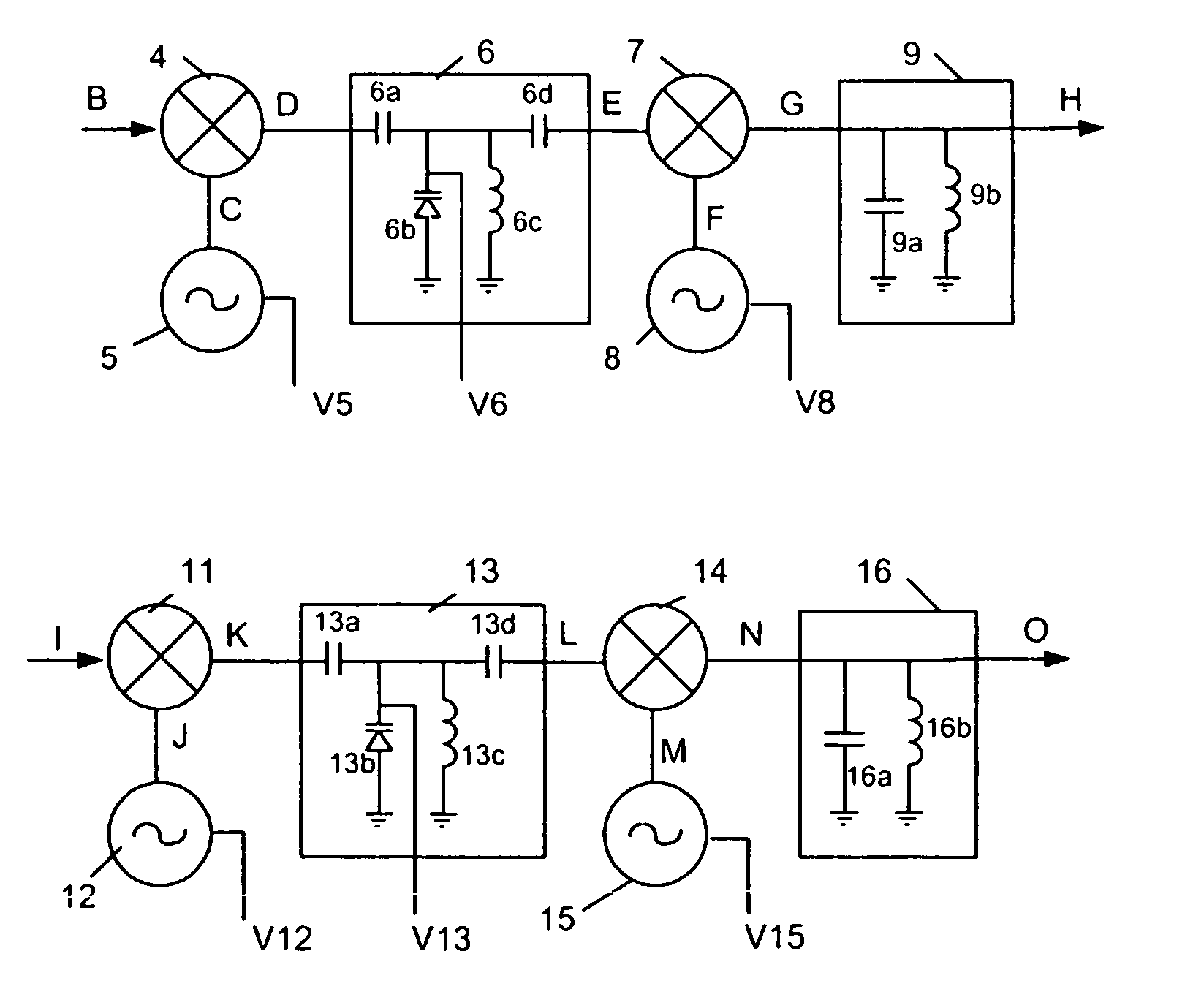Method of receiving and transmitting the signal of high frequency
a high-frequency signal and processing method technology, applied in the field of processing of rf frequency signals for receiving and transmission, can solve the problems of inability to make filter components such as filters and duplexers, which cannot be made using normal inductors and capacitors, and are sensitive to manufacturing and assembly tolerances, so as to facilitate the integration of the whole transmitter into ics, reduce the requirement for filtering components 16, and facilitate the effect of implementing
- Summary
- Abstract
- Description
- Claims
- Application Information
AI Technical Summary
Benefits of technology
Problems solved by technology
Method used
Image
Examples
Embodiment Construction
[0037] Refer to FIG. 3, it shows a circuit implementation of the core functional blocks from Point B to Point H of the receiver in FIG. 1 in the invention. It can be seen from FIG. 3 that the interconnections of the functional blocks, namely, 1.sup.st Mixer 4, 1.sup.st LO Source 5, 1.sup.st IF Filter 6, 2.sup.nd Mixer 7, 2.sup.nd LO Source 8 and 2.sup.nd IF Filter 9, are the same as those in FIG. 1. A circuit implementation for each of the above blocks is described as follows: Frequency conversions are performed with Mixers 4 and 7. Voltage-controlled Oscillators are used as the 1.sup.st and 2.sup.nd LO sources 5 and 8, whose output frequencies vary as functions of voltages V5 and V8, respectively. The 1.sup.st IF Filter 6 is a band pass filter. Its input is at Point D connected to Capacitor 6a. The other terminal of Capacitor 6a is connected to the cathode of Varactor 6b, Inductor 6c and Capacitor 6d. The anode of Varactor 6b and the other terminal of Inductor 6c are grounded. The ...
PUM
 Login to View More
Login to View More Abstract
Description
Claims
Application Information
 Login to View More
Login to View More - R&D
- Intellectual Property
- Life Sciences
- Materials
- Tech Scout
- Unparalleled Data Quality
- Higher Quality Content
- 60% Fewer Hallucinations
Browse by: Latest US Patents, China's latest patents, Technical Efficacy Thesaurus, Application Domain, Technology Topic, Popular Technical Reports.
© 2025 PatSnap. All rights reserved.Legal|Privacy policy|Modern Slavery Act Transparency Statement|Sitemap|About US| Contact US: help@patsnap.com


